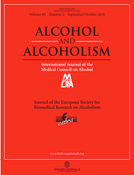
Alcohol is a toxic and dependence-producing substance that can damage most organs in the body, and is implicated in more than 60 different diseases (Oforei-Adjei et al., 2007). Alcohol is now the third leading cause of ill health in Europe (Rehm et al., 2009). In the UK, alcohol-related morbidity and mortality have been increasing over the last 30 years, and alcohol-related hospital admissions now exceed 1 million per annum in England (North West Public Health Observatory, 2011).
The brain is particularly sensitive to the toxic effects of alcohol either directly, particularly in the foetus and young people, or in the context of malnutrition and thiamine deficiency leading to Wernicke–Korsakoff syndrome; or following repeated episodes of alcohol withdrawal. The precise mechanisms of alcohol-related brain damage (ARBD) remain to be fully understood and several papers in this series describe the limits of knowledge. However, enough is already known to make a significant impact on the prevalence of ARBD through relatively inexpensive preventive strategies. Yet, such preventive strategies are poorly implemented in the UK. Why is this the case?
First, there has been a lack of training and clear guidance to clinicians on preventing and managing alcohol problems, including ARBD. This has resulted in low levels of identification and intervention of patients at risk of alcohol-related complications in medical and psychiatric care (Barnaby et al., 2003; Cheeta et al., 2008). The recently published suite of NICE guidance on alcohol-use disorders aims to improve detection, prevention and management (NICE, 2010a, b, 2011). However, effective implementation will require a significant investment in staff training to raise awareness, knowledge and skills.
Secondly, there is the issue of stigma. Patients who misuse alcohol face stigma and opprobrium, …
Request Reprint E-Mail: jane.marshall@slam.nhs.uk